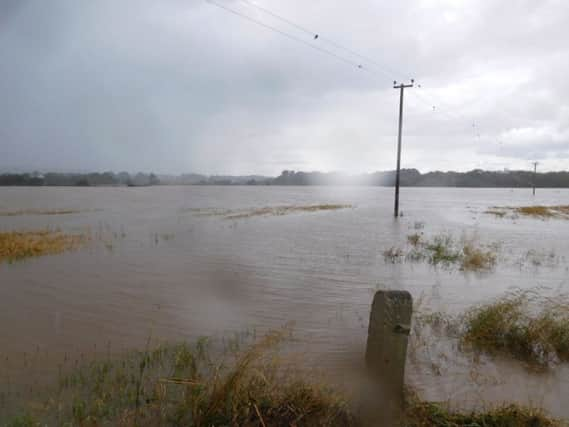Survey confirms risk of a fodder crisis: Swann


The bad weather conditions that impacted most of the province during the second half of 2017 is to blame for much of the shortage, with many farms struggling.
Mr Swann said: “Last year was a brutal year for getting fodder lifted. Whilst quite a few farms locally were lucky to get good high-yielding first cuts of silage made, in many parts of Northern Ireland from mid-summer onwards the land never had time to dry.
Advertisement
Advertisement
“Even before last August’s storms – during which the Met Office confirmed two-thirds of the average rainfall for the month came down in a matter of hours in some places – much of the land across was already saturated.
“The enduring poor ground conditions resulted in second cuts either being delayed by months, or not getting lifted at all. That, combined with the fact that cattle were being housed months earlier than normal, has meant that many local farmers are sitting with much lower levels of fodder than they ideally would have preferred.”
Mr Swann said that the annual DAERA survey, which provides information on levels of hay and silage production and sowings of winter cereals, reveals for the first time the true extent of the problems many local farms are facing.
He continued: “Whilst the good first cut meant more land was harvested at least once for silage, because of the poor weather conditions for the second and thirds cuts, average yields for 2017 were just 29.5 tonnes per hectare. This was the lowest yield recorded in 12 years.
Advertisement
Advertisement
“Similarly the area of hay saved decreased by almost 40% in 2017 to around 7,000 hectares, the lowest level ever recorded. Yields were also significantly down on the year before even with the fact that 2016 was also such a bad summer that it was a low baseline to start off with.
“Other crops such as winter wheat didn’t get off to a good growing start either, especially as they were crying out for a bit of August sunshine, and then many farmers encountered major delays in harvesting them. The DAERA survey again has confirmed that the area of cereal crops in the ground at 1 December 2017 was estimated at 12,700 hectares, a 20% decrease compared with 2016. The area of winter oats in December 2017 halved to just 700 hectares planted.
“Whilst I am aware of many farmers selling young stock earlier than they usually would, as well as using extra feeding to compensate for less silage, the reality remains that many are still completely at the mercy of what the spring weather holds. If it’s a good spring and cattle can get out then they should make it through; if it’s a bad spring and cattle have to stay in longer then they will face spiralling prices and real difficulty in actually sourcing quality fodder.
“We will have to wait and see, however I would urge DAERA to look at some of the preparatory work that officials in the Republic of Ireland are undertaking in response to their fodder shortage. I have written to the Department asking them what arrangements they are putting in place.”
Advertisement
Advertisement
Mr Swann added: “Whilst I still hope it really doesn’t come to it, right now it’s better to have plans in place just in case we do end up in a situation such as 2013 when some local farms were simply not able to secure fodder for their animals.”